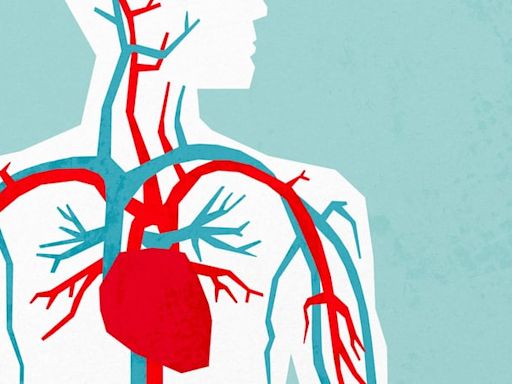Search results
2 days ago · Learn about the structure, function, and diagram of the human heart, a four-chambered double pump that circulates blood through the body. Explore the history, evolution, and diseases of the heart, and watch videos of its electrical conduction and sounds.
- The Editors of Encyclopaedia Britannica
- In humans, the heart is situated between the two lungs and slightly to the left of center, behind the breastbone. It rests on the diaphragm, the mu...
- The heart consists of several layers of a tough muscular wall, the myocardium. A thin layer of tissue, the pericardium, covers the outside, and ano...
- The pumping of the heart, or the heartbeat, is caused by alternating contractions and relaxations of the myocardium. These contractions are stimula...
- The rhythmic noises accompanying the heartbeat are called heart sounds. The two distinct sounds are heard, a low, slightly prolonged “lub” (first s...
4 days ago · The heart is a muscular organ about the size of a closed fist that functions as the body's circulatory pump. It takes in deoxygenated blood through the veins and delivers it to the lungs for oxygenation before pumping it into the various arteries (which provide oxygen and nutrients to body tissues by transporting the blood throughout the body).
3 days ago · The heart is a muscular pumping organ located medial to the lungs along the body's midline in the thoracic region. The bottom tip of the heart, known as its apex, is turned to the left, so that about 2/3 of the heart is located on the body's left side with the other 1/3 on right.
2 days ago · Cardiology is a branch of medicine that deals with disorders of the heart and the cardiovascular system. The field includes medical diagnosis and treatment of congenital heart defects, coronary artery disease, heart failure, valvular heart disease, and electrophysiology.
4 days ago · cardiovascular disease, any of the diseases, whether congenital or acquired, of the heart and blood vessels. Among the most important are atherosclerosis, rheumatic heart disease, and vascular inflammation. Cardiovascular diseases are a major cause of health problems and death. (Read Britannica’s biography of Michael DeBakey.)
1 day ago · A labeled heart diagram helps you understand the structure of human heart, which pumps blood through body. Learn the structure and several heart conditions.
2 days ago · Heart rate, like other vital signs such as blood pressure and respiratory rate, change with age. In adults, a normal heart rate is between 60 and 100 bpm (normocardic), whereas it is higher in children. A heart rate below normal is called "bradycardia" (<60 in adults) and above normal is called "tachycardia" (>100 in adults).

